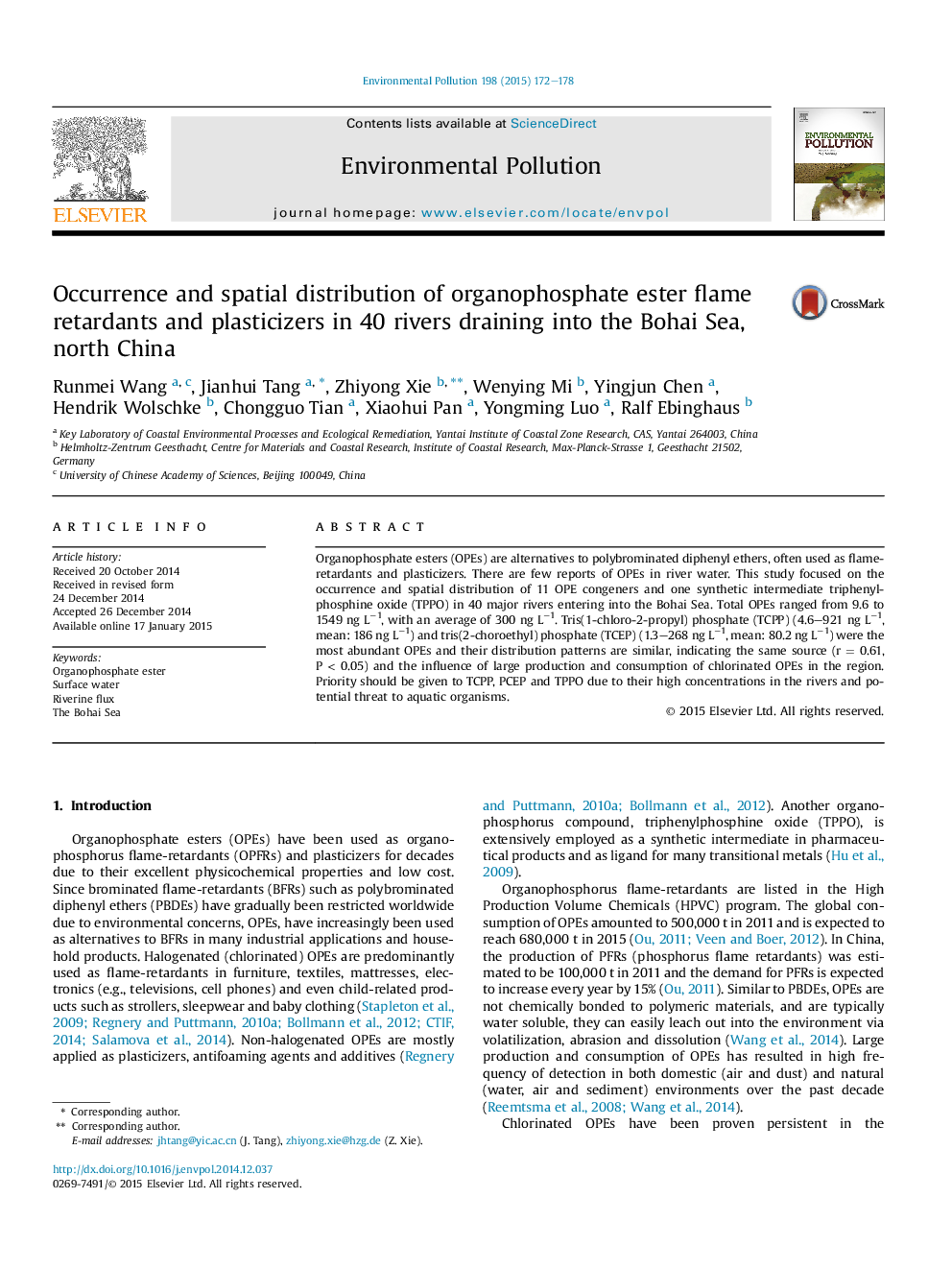| Article ID | Journal | Published Year | Pages | File Type |
|---|---|---|---|---|
| 6317004 | Environmental Pollution | 2015 | 7 Pages |
â¢High levels of OPEs have been determined in river waters around Bohai Sea.â¢Triphenylphosphine oxide presented very high concentrations in specific rivers.â¢The total riverine inputs of OPEs and TPPO were estimated.
Organophosphate esters (OPEs) are alternatives to polybrominated diphenyl ethers, often used as flame-retardants and plasticizers. There are few reports of OPEs in river water. This study focused on the occurrence and spatial distribution of 11 OPE congeners and one synthetic intermediate triphenylphosphine oxide (TPPO) in 40 major rivers entering into the Bohai Sea. Total OPEs ranged from 9.6 to 1549 ng Lâ1, with an average of 300 ng Lâ1. Tris(1-chloro-2-propyl) phosphate (TCPP) (4.6-921 ng Lâ1, mean: 186 ng Lâ1) and tris(2-choroethyl) phosphate (TCEP) (1.3-268 ng Lâ1, mean: 80.2 ng Lâ1) were the most abundant OPEs and their distribution patterns are similar, indicating the same source (r = 0.61, P < 0.05) and the influence of large production and consumption of chlorinated OPEs in the region. Priority should be given to TCPP, PCEP and TPPO due to their high concentrations in the rivers and potential threat to aquatic organisms.
Graphical abstractDownload full-size image
